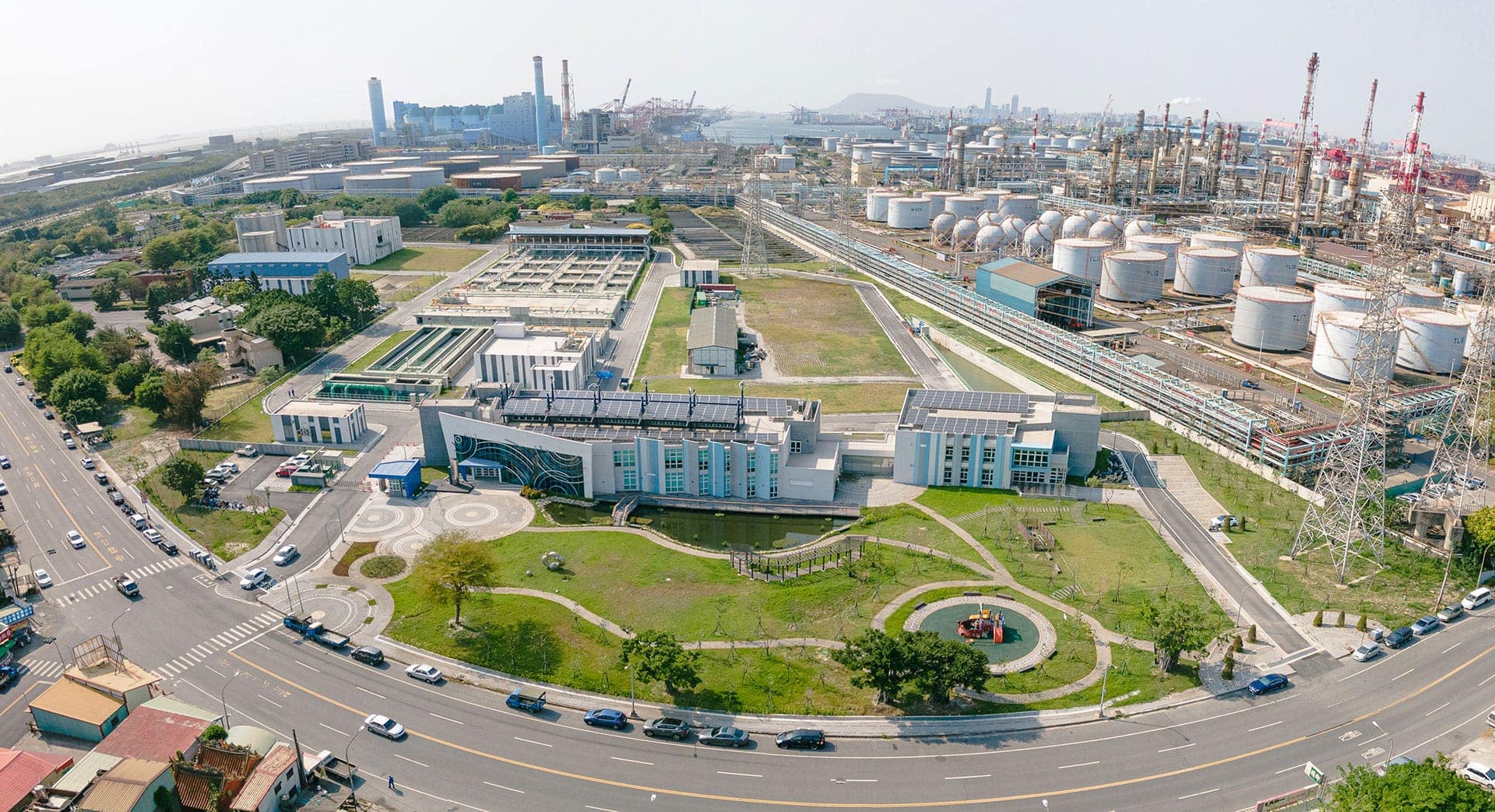The Linhai project is the first wastewater treatment plant in Taiwan that combines wastewater treatment facilities and reclaimed water facilities in one plant. It also applies various digital technologies such as augmented reality in the multiple systems construction and operation stages including the water intake system, sewage treatment system and reclaimed water treatment system.
This project is promoted under the Build-Transfer-Operate (BTO) with consideration according to the Act for Promotion of Private Participation (PPP) in Infrastructure Projects. The plant was officially put into operation at the end of 2021. In this project, AECOM acted as the contract management consultant
providing quality supervision for the construction and operation of the water intake system, sewage treatment system, reclaimed water treatment system, advanced sewage test center and water distribution system.
The first phase of this project was designed to process 55,000 cubic meters per day (CMD) of household sewage and produce 33,000 CMD of reclaimed water to supply five plants in the Linhai Industrial Zone, including Sinosteel, Dalin Oil Refinery of Petro China, LCY Chemical, LCY Technology and Sinopec. As the demand for domestic water and industrial water continue to rise, the plant can expand its wastewater treatment and reclaimed water capacities to 100,000 CMD and 60,000 CMD respectively.
Located in Taiwan’s industrial and technological hub, this project incorporated innovation and breakthrough in environmental, economic, and social aspects in order to effectively solve water resources issue and respond to the government’s 2050 net-zero emissions target. Not only did it stimulate the growth of the green energy industry and promote water recycling and reuse through reclaimed water, it also enhances flexibility in water resources allocation. In addition, it serves as a demonstration project for transforming successfully to meet net-zero emission goal. Measures to achieve sustainable goals include:
- Innovative digital applications: Incorporated AR technology into the construction processes and integrated 3D Building Information Modeling (BIM) to reduce duplicated work and minimize resource consumption.
- Low-carbon infrastructure: Adopted the Green Building Label during the construction phase and achieved the Ministry of the Interior’s “Silver Certification”. Additionally, localization and gender-friendly planning for various facilities were considered.
- Flood resilience enhancement: Constructed flood detention facilities to retain increased surface runoff within the site to mitigate the risk of flooding in the surrounding low-lying areas caused by land development.
- Urban reservoir: Provided a source of water that is shielded from climate change, ensuring stable water supply for industrial development without competing with local communities.
- Environmental and cultural education: Set up an education park featuring the regeneration of water resources. Designed environmentaleducation courses with local characteristics incorporated to promote the concept of sustainable water resources.
- Data Integration Foundation: Established Taiwan’s first advanced sewage testing center, offering an official testing platform for industrial products. Built a database of sewage treatment technologies for relevant authorities’ reference.
Deliver faster, smarter and better result
During the construction phase, AECOM applied its digitized technology Augmented Reality Spatial Visualizer (ARSV) to digitalize the current paper-based construction drawings by utilizing existing BIM data to enable mobile devices to preload, access and project by AR true to scale 3D model on-site. With the aid of cloud database, 3D BIM data can also be shared by office and site staff as well as our sub-contractor. This is in line with our ESG strategy, which emphasized on the effective utilization of existing digital assets (models and data). Through leveraging the most appropriate digital tools and solutions to integrate mixed reality (XR) technology, BIM, geographic information systems (GIS), cloud databases, and conducting research and development on data analysis techniques to let project team and their client interact with the digital information throughout the engineering planning, design, construction, and operation phases, enhancing work efficiency and eliminating information gaps. The visualization of digital information is unprecedented.
Richer and more diverse sustainability actions
To foster sustainability in energy, efficient aeration discs were adopted in the design of the biological pond to reduce energy consumption. Solar and wind power facilities were installed on rooftops inside the plant campus. In terms of sustainability in operations, a water intake model covering the area of Kaohsiung sewage district was adopted to apportion the processed water volume for each trunk line in a bid to reduce the risk of subsequent operations. For the environment, the campus was enhanced with landscaping, especially native plants, to improve air quality and lower site temperature to create a more comfortable and aesthetically pleasing setting, reversing the public’s perception of the dull outlook of water plants. An educational area was established with water resource regeneration as the theme; environmental education courses were designed to help environmental education take root in the local community. The concept of sustainable water resources was promoted in combination with the introduction of the cultural background of neighboring regions of Hongmaogang and Dalinpu, letting the public experience a comprehensive local culture and water resource environmental education journey.
Awards
- Golden Thumb Awards for PPP 2023
- National Sustainable Development Awards 2022
- Award, Autodesk BIM+ Awards 2021
- Best Popularity Award
- Top3 finalist of Construction Extension
- Top3 finalist of Platform Development
- Urban Engineering Quality Gold Awards 2021











